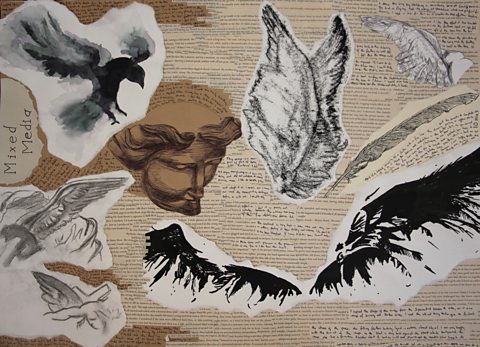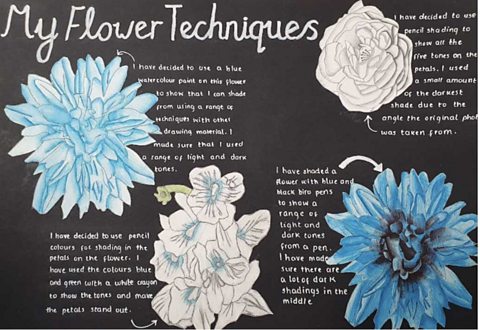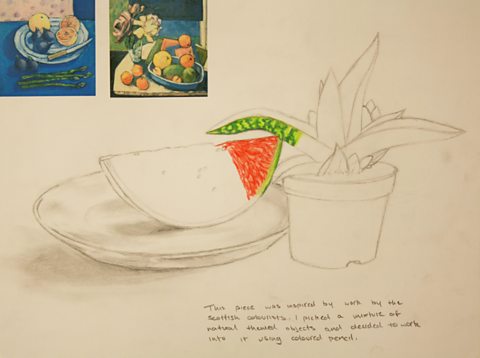Approaches to your expressive stimuli

You can respond to the same stimuli in different ways to create very different results. Think about the style you are interested in achieving and which aspect of the stimuli interests you most. When you are making drawings or taking photographs, consider:
- Realism – what degree of realism are you trying to achieve?
- Expressive qualities – are you interested in expressive mark-making, or in recreating the style of a particular artist or art movementA group of artists or designers from the same time period whose work had similar aims and/or similar characteristics. Examples include Impressionism, Art Deco and Bauhaus. ?
- Visual elements – which are the most important visual elements?
- Attention to detail – are you interested in capturing detail? If so, think about close-up viewpoints.
- abstractionArtistic treatment of a subject which explores and portrays it in a way that does not directly reflect how it looks. – are there abstract qualities in the stimuli that you would like to explore?
- Capturing a mood – is your response about capturing or communicating a particular mood or atmosphere?

Using artworks as stimuli for expressive work

Artists who work in your chosen area and whose ideas and techniques you are interested in can be a good source for stimulus.
Choose key artists who will influence your own practical work and analyse their techniques. This work can be presented in a number of different ways:
- in your sketchbook
- in a jotter
- as a presentation on sheets of paper or card
- as a digital presentation using software of your choice
- as a blog
You should consider how the artists’ approaches might influence your own work. Think about:
- key visual elements and how they are used
- the style of the work and how this is achieved
- Does it belong to a particular art movement?
- What are its characteristics?
- social and cultural influences that have had an impact on the artworks
- materials and techniques used
Make this work visual. Include as many relevant images as possible. See if you can find close-up details of the works or see the work in real life if possible. This will help you understand the artists’ techniques.
More guides on this topic
- Finding inspiration - Eduqas
- Analytical drawing - Eduqas
- Developing ideas - Eduqas
- Creating a design brief - Eduqas
- Experimenting with materials and techniques - Eduqas
- Recording and observing - Eduqas
- Annotating your work - Eduqas
- Analysing and evaluating - Eduqas
- Assessment objectives and presenting your work - Eduqas
- Externally set assessment - Eduqas